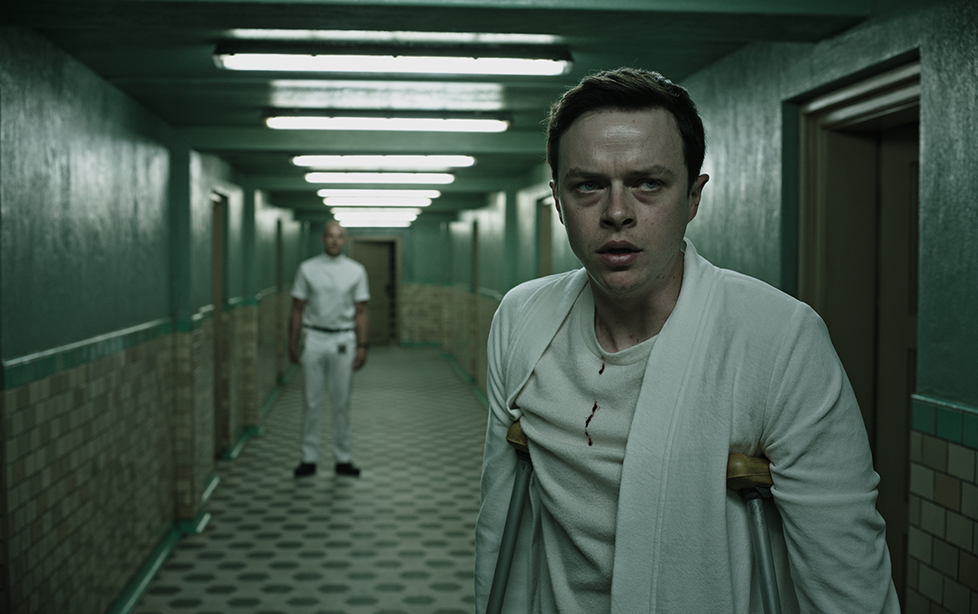A Cure for Wellness
A Cure for Wellness, 2017, 1 ¾ stars
All is not well
Clarity is verboten in Verbinski’s Cure
From The Orlando Weekly, February 15, 2017
The trailer for the new Gothic thriller A Cure for Wellness refers to director Gore Verbinski as “visionary.” The film’s promotional team must have mistaken having visions for being visionary.
That’s not all bad. Sure, Verbinski’s creation is a storytelling train wreck, but this is the Orient Express that is crashing, and you can’t look away from its crumpled beauty, especially because Verbinski (Rango, The Ring, The Lone Ranger, Pirates of the Caribbean movies) so boldly mimics the cinematography of Stanley Kubrick and the themes of The Third Man. Throw in an embrace of Thomas Mann’s Death in Venice and Magic Mountain, and you have the makings of something special – if it didn‘t all collapse in a tedious, bloated cacophony of silliness.
Dane DeHaan, perhaps best known for playing the Green Goblin in The Amazing Spider-Man 2 in 2014, plays Lockhart, a young American executive. After his boss visits a secluded spa in the Swiss Alps and refuses to return, the company assumes he’s had a nervous breakdown and sends Lockhart to retrieve him. But, once there, he realizes the sanatorium has both a haunted history and a bizarre attraction. People simply can’t find the will to leave, and Lockhart – helped by a mysterious patient, Hannah (Mia Goth) – is determined to find out why.
Much like Jack Nicholson in The Shining, DeHaan is expected to do the film’s heavy lifting while depicting his own slide into insanity and undergoing torture on par with Malcolm McDowell’s in A Clockwork Orange – and he’s not up to the task. At least he has company, as other patients are also forced to undergo “the treatment.” Even a couple of CGI animals are harmed unnecessarily, seemingly to support Verbinski and writer Justin Haythe’s misguided, muddled metaphors about the life essence and, um, precious bodily fluids. Admittedly, the symbolism would be arresting, if we only understood it. Similarly, the film’s commentaries on commercial greed and mental health would have been more impactful if they hadn’t been devoid of context.
As Volmer, the sanatorium’s director, Jason Isaacs is well cast, but, like DeHaan, he too is a prisoner of a nonsensical script and an unrelateable character. Though Goth’s character is also ridiculous, she gives the best performance. Indeed, when the film goes bat-shit crazy in its third act, she becomes infinitely watchable, harnessing an eroticism that is both mesmerizing and disturbing considering the character’s age and family ties.
The film premiered at the 2016 Butt-Numb-A-Thon Film Festival, which is appropriate considering its 146-minute runtime. If 20 minutes had been excised, it would have at least had a chance at clarity. But at its current length, the film would be better suited to the Brain-Numb-A-Thon Festival, as the smart, surreal premise slowly, slowly unravels into schlock.
Spoiler alert: One interpretation is that Lockhart – who is injured in a car crash – is dead for most of the movie. That would explain some of Verbinski’s wild plot explorations and his drift toward pure “art film.” Another explanation is that Lockhart is delusional, or a patient from the outset, in the vein of I Am the Cheese, an underrated mindbender from 1983. Personally, I was rooting for the latter, but, frankly, I would have settled for anything other than the actual conclusion.
Meat Loaf taught us that we’ll never find a Coupe de Ville at the bottom of a Cracker Jack box. Conversely, Verbinski has reminded us that we might one day crack open a Fabergé egg and find a Yugo.
© 2017 Orlando Weekly / MeierMovies, LLC
